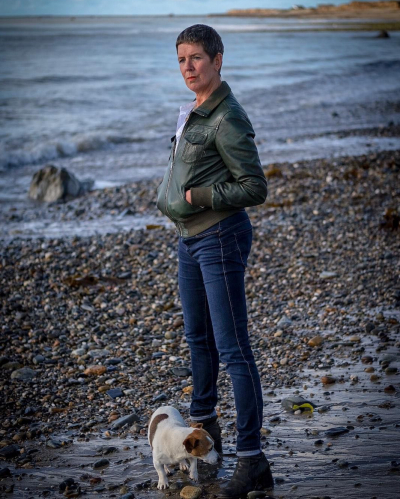In 2008 artists Els Dietvorst and Dirk Braeckman were invited by Time Festival in Ghent to curate the ninth and final edition of this theatre and performance festival. The artists proposed to turn the event into a book, and as such provided it with a broad and lasting platform. The idea was to offer a selection of international artists a printed platform to share ideas and open discussions about contemporary artistic practice and its processes. As Dietvorst put it: 'Artists scratch the ground, they collect and catalogue. This 'prelude' of creation, the meandering of thought is rarely shown. So why not consider a book as a 'space for thought', a space to collect these questions. A choice determined by the things we are occupied with, here and now; a book that stands between an atlas of ideas and a sketchbook; an open call from artist to artist and from artist to reader'.
The result was a large format volume of 344 pages with the title Time is a Book. Among the participants were widely acknowledged artists like Chantal Akerman, Carl De Keyzer, Mekhitar Garabedian, Craigie Horsfield, Suchan Kinoshita, Mark Manders, Honoré d'o, Martha Rosler, Ana Torfs and Lawrence Weiner. The book was printed in an edition of 6000 copies and mainly distributed for free. As such, the Time Festival was both reduced and expanded: the artists were only given the space of rectangular pages in a black and white book, with a rigid format. On the other hand, the large size of the edition and the permanency of print guaranteed a larger as well as a longer circulation and communication than an ephemeral event. Curating a book as an alternative platform for artistic research and discourse, Dietvorst and Braeckman clearly highlighted its potential as a critical and creative tool for creation, communication and conservation. So Time is a Book positions itself somewhere between activism and archivism, not unlike its predecessors in the conceptualist 1960s and 1970s such as the so-called Xerox Book (Seth Siegelaub, 1968).
With the research project Time is a Book (is Time) we aim at re-evaluating this experimental gesture of 2009 and considering its relevance and potential for today's and tomorrow's artistic practice. By bringing the book, its process of creation and its aftereffects to the fore, we hope to reveal its potential as a time capsule and a container of creativity. A decennium has passsed since its release in 2009, and many events have reshaped our perception of the world since then. The time between 2009 and 2019 is also a space. How does the book (this specific book and the book as a multi-medium for artistic practice) reflect this?
Dietvorst and Braeckman reconsider their artistic and editorial positions then and now, and by inviting some of the contributing artists and writers to share their opinions, views and projects in relationship with Time is a Book, they hope to give Time is a Book an active afterlife. This afterlife can take different forms and shapes: talks with the editors and some of the contributors, a presentation of sources and materials that guided Dietvorst and Braeckman back in 2009, and lectures/talks by a selection of artists and writers that participated in the book project. The whole process will be documented and eventually published in the form of a book, zine or newspaper format. All of the events aim at a mixed audience of art students, artists, designers, researchers and lovers of print and books.





